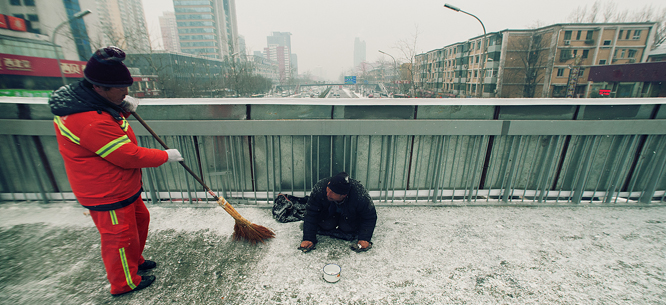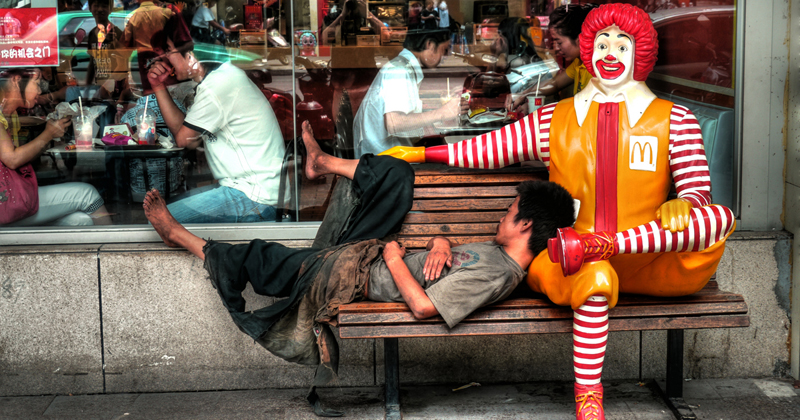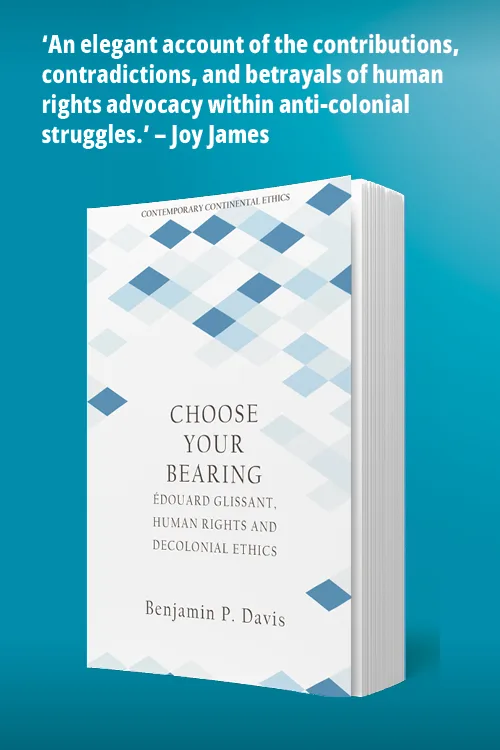“Masters of the People”: China’s New Urban Poor
“Masters of the People”: China’s New Urban Poor
Political scientists Dorothy Solinger and Mark Frazier talk to Jeffrey Wasserstrom about China’s often overlooked urban poor, and how their conditions are—and aren’t—changing.

China’s economic boom is one of the most important stories of our time. The domestic impact of the country’s rapid development has been profound. The China that Deng Xiaoping ran when he made his famous 1979 visit to the United States was a predominantly rural land with low-rise cities that offered very limited choices to consumers, who typically navigated the urban landscape via bicycles and buses. Chinese president Xi Jinping has arrived in the United States, by contrast, as leader of a primarily urban country whose massive metropolises are dotted with megamalls and crisscrossed by freeways, a nation with skylines that look so futuristic that they have been used as backdrops for science fiction movies set in times still to come. The international ramifications of China’s surge to the top of the global economic hierarchy are noteworthy as well: the American CEOs meeting with Xi are keenly aware of a growing demographic of wealthier Chinese citizens, who can today afford to buy the latest Silicon Valley gadgets, fancy designer watches, and fine Napa wines.
All this should not, though, lead us to overlook the fact that many people have been left behind, even as the country’s overall GDP has soared. Nor should we imagine that in a country that is breeding millionaires faster than any other nation on earth, the poor are all from villages or migrate from the countryside to cities in search of work. The ranks of the poor in China today also include people who have lived in cities all their lives, and, as members of the industrial proletariat, were once considered “the masters of the people.” Political scientists Dorothy Solinger and Mark Frazier try to explain this often overlooked group, and how their economic conditions are—and aren’t—changing.
Jeffrey Wasserstrom: Western news reports about China today often refer to the country’s economic boom in recent decades. We hear a lot about hundreds of thousands of people being lifted out of poverty—or, more accurately, lifting themselves out of poverty. And yet, we also know that the gap between the rich and the poor has become enormous. Some people with only a casual interest in China might assume this is purely the result of the number of millionaires in the country today. But it’s also due to some people remaining or—in most cases—becoming poor over the past two decades. Professor Solinger, you’ve been researching precisely this topic, so could you begin by telling us something about who has been excluded from the boom times? Where do China’s poor live today?
Dorothy Solinger: There’s still quite a bit of poverty in the country. Well over 20 million urban people are recipients of the “Minimum Livelihood Guarantee,” a nationwide program that began in Chinese cities sixteen years ago. The chief aim of the program was to appease the tens of millions of workers summarily dismissed from their factory jobs almost at one fell swoop in the late 1990s just as China prepared to enter the WTO. In 2006, in the wake of ongoing protests by farmers, the initiative was extended to the countryside, and today there are over 50 million beneficiaries there.
But in both urban and rural areas the numbers of people targeted by the program has remained stubbornly constant, suggesting the use of quotas. Moreover, a 2006 World Bank study found that the numbers served in the cities amounted to just about a third of those who were in fact eligible, and there is little to suggest that this has changed. Recipients of the guarantee are often accused of being accepted into the program because of their personal ties, or because they have been raucous and argumentative.
Wasserstrom: Can you tell us more about the urban poor in particular? We hear a lot about migrant workers, but your work has focused largely on other groups of urbanites. How exactly did they end up impoverished and what limits their chances of rising in the social order?
Solinger: Originally, the urban cohort was largely the laid-off, many of whom were in the streets in 2000 vociferously protesting their job losses. These were urbanites who were also casualties of the shutting down of schools during the 1966–76 Cultural Revolution, and who were in 2000 just entering middle age. The country’s political elite was anxious that the nation’s cherished enterprise reform program would be undermined by the disorder of the protests—which, in turn, would damage China’s chances of entering the WTO and thereby prevent the country from becoming “modern.” The leadership also worried that maintaining the loss-making firms that employed these laborers would diminish the nation’s competitiveness.
But a switch in emphasis in recent years (perhaps similar to a new bent in Western welfare platforms) has urged employment for the healthy unemployed (despite the fact that the labor market is singularly inhospitable to these over forty, semi-skilled or unskilled laborers), and focused on subsidizing only the utterly destitute, severely ill, and disabled.
Even though basic school costs for grades one through nine have been eliminated for urban-registered children, the young of these discarded workers still suffer mightily in their pursuit of adequate schooling. First, they tend to live in rundown neighborhoods, where the local schools are sorely wanting. And secondly, their parents lack the cash to hire tutors or fund extra-curricular activities. So even children with some intellectual promise inevitably fall behind and have no hope of leaving poverty. The job market remains almost as out of reach for them as it has been for their parents.

Wasserstrom: Has the government made efforts to address the needs of this group? If so, how successful have such measures been?
Solinger: The government has offered several forms of assistance. First and chiefly, the Minimum Livelihood Guarantee is aimed at providing every eligible household—that is, families whose average income falls below the city-based poverty line—with the funds required to bring that family’s members up to the line.
But as mainstream urbanites’ incomes have steadily risen, the average poverty line across China dropped from representing 26.7 percent of the average disposable urban income in 1998 down to a tiny 13.8 percent, which it reached in 2010. If we look at wage levels, the story is similar: in 1998, the urban average poverty line amounted to 20.5 percent of the mean wage in very large cities. By 2011, that line had declined to a mere 7.8 percent of the average wage in state firms. All told, the livelihood—or, at the very least, the relative livelihood—of the dibaohu (the recipients of this allowance) is clearly a topic of declining concern for the leadership.
Other efforts are the creation of irregular, short term, and degrading jobs for those able to perform them; minimal job training, which is of little use; and now, neighborhood health insurance, which offers extremely limited reimbursement if a person has to stay in a hospital. In cities in the deep north, financial assistance for purchasing fuel in the winters is also available.
Wasserstrom: Is the plight of this group getting more desperate or remaining as it has been?
Solinger: In some ways the situation is better now, despite the relatively declining “allowances.” People get more renminbi (the Chinese currency) per month and some are thrilled with their new, piddling occupations. But the outcome for future generations remains bleak.
Wasserstrom: Professor Frazier, what stands out to you in terms of continuities and disjunctures between what Professor Solinger has described for the current period and the situation in the Mao years (1949–1976) or during the Republican period (1912–1949)?
Mark Frazier: I think it’s crucial to understand that the social policies of today are the legacies of the Mao era, and also result indirectly from the Republican period. The most important of these legacies is the rural-urban gap—in incomes, social welfare policies, and much else. Mao-era policies favored development of cities at the expense of rural areas and created extreme disparities between the two. This contributed to the huge gaps in incomes, state assistance, and opportunities more generally in contemporary China. Some would argue—and I tend to agree—that political elites in China, then and now, regarded cities as inherent sources of political instability. This view of cities gave rise to both favorable urban social policies and measures to prevent rural populations from coming to cities. Poverty generally, but urban poverty in particular, tends to be associated in Chinese political discourse with increased risk of social unrest, more so than I think one sees elsewhere.
Wasserstrom: What strikes you as most similar and most dissimilar about poverty in China and in India?
Frazier: Chinese politicians seem to regard urban poverty and informal settlements in particular with a greater sense of fear and anxiety than their Indian counterparts. This perception, combined with soaring urban land prices, have offered powerful incentives to municipal officials in China to remove the poor (both migrants and the older urban residents) from their homes and often, from their workplaces (small shops and street stalls). The informal settlements and markets one finds in India and many other cities are regarded by Chinese elites as an obstacle to modernity, to echo what Professor Solinger noted. That said, despite their obvious differences in political institutions, in both countries we see how economic reforms and unbalanced growth have generated a new politics of inequality and poverty reduction that takes the form of laws and policies aimed at providing support to the poor: basic income programs in China and a law establishing the right to paid work for rural residents in India, among much else. Implementation is far from perfect, but increasing awareness among the poor means that officials cannot easily ignore the new social programs.
Wasserstrom: You’ve recently been doing some research in South China. Could you tell us about whether there are regional differences in how the rural-urban divide manifests itself?
Frazier: Poverty rates vary across regions, with coastal areas historically having lower rates than the interior. But within any given region or province, it’s still the rural-urban gap that is the main source of inequality. In high-growth provinces such as Guangdong (where I was recently), the physical differences between rural and urban are quickly eroding, faster than the administrative distinctions. Some of the most densely populated places in China are technically “villages” where rural collectives lease apartments to migrant workers. The Chinese leadership has decided to address the rural-urban gap by essentially converting rural areas into urban townships, in what is known as “urbanization of place.” As a consequence, China’s urban population is predicted to reach 1 billion by 2030. There’s a great risk that under this urbanization plan, the rural poor of today will simply become the urban poor of tomorrow. Much will depend on the kind of cities that are planned and emerge over this process: can they provide jobs, affordable housing, and public services for the urban poor and migrant populations? Or will they merely reproduce the familiar showcase central business districts catering to a small minority of the wealthy and powerful that one sees in virtually all cities today?
Wasserstrom: Any final thoughts either of you would like to add?
Solinger: I just want to underline that the poor in the cities that Professor Frazier is alluding to are mostly the same rural migrants (who retain rural residency registration) that I wrote about in my 1999 book Contesting Citizenship in Urban China. Their situation has not improved much since I wrote about them long ago. They remain ineligible for a range of urban perquisites (which, granted, have diminished considerably since the mid-1990s). I, on the other hand, was talking about those who became jobless by diktat over the past twenty years (but mainly around 1997–2002), and who are mired in a poverty that neither they nor their children can escape.
Jeffrey Wasserstrom is Chancellor’s Professor of History at UC Irvine and a member of Dissent’s editorial board.
Dorothy Solinger is a prolific scholar at UC Irvine and the author of Contesting Citizenship in Urban China: Peasant Migrants, the State, and the Logic of the Market. She has more recently focused on the least privileged of long-term city dwellers.
Mark Frazier is Academic Director of the New School’s India-China Institute, where he is leading a project on twenty-first century urbanization in China and India. His recent research compares housing policy and informal settlements in twentieth century Shanghai and Mumbai.





